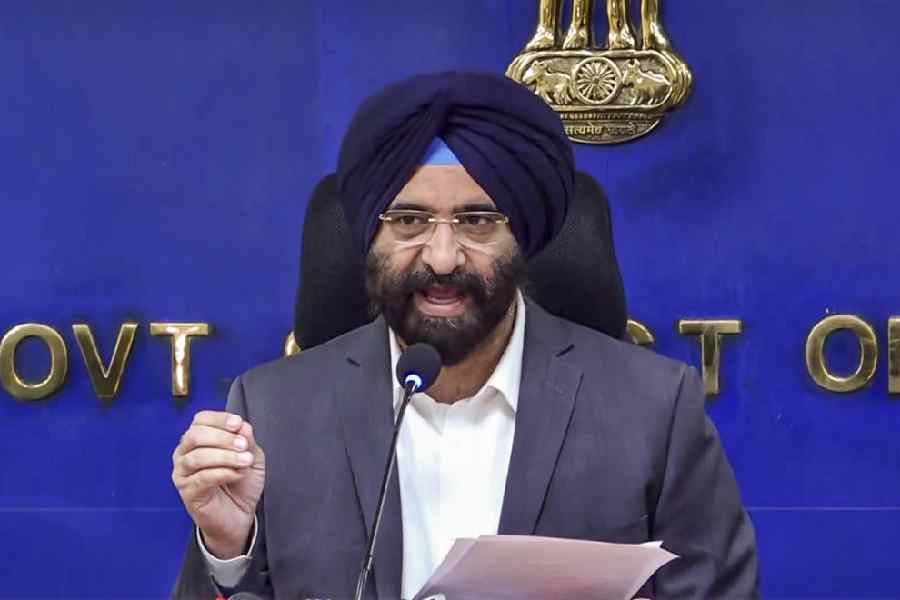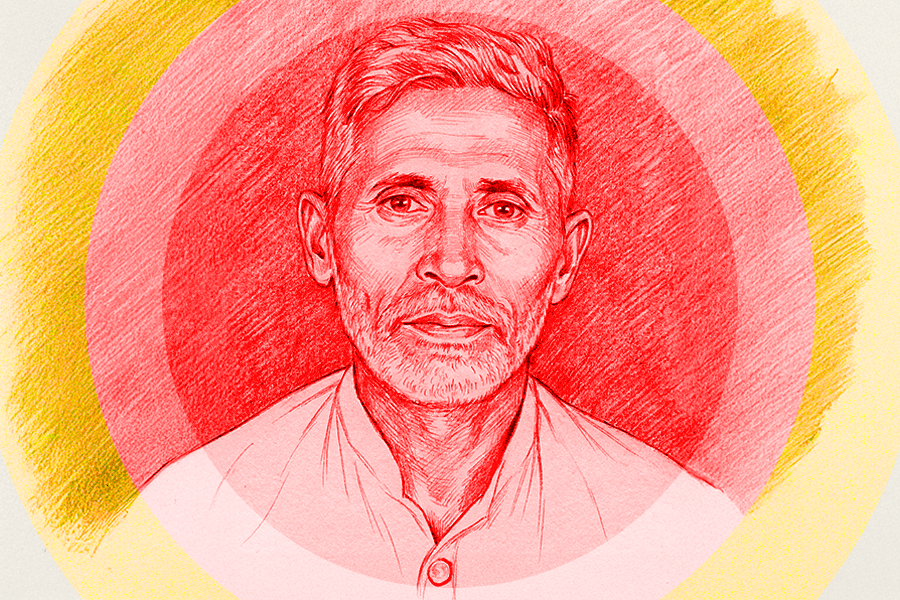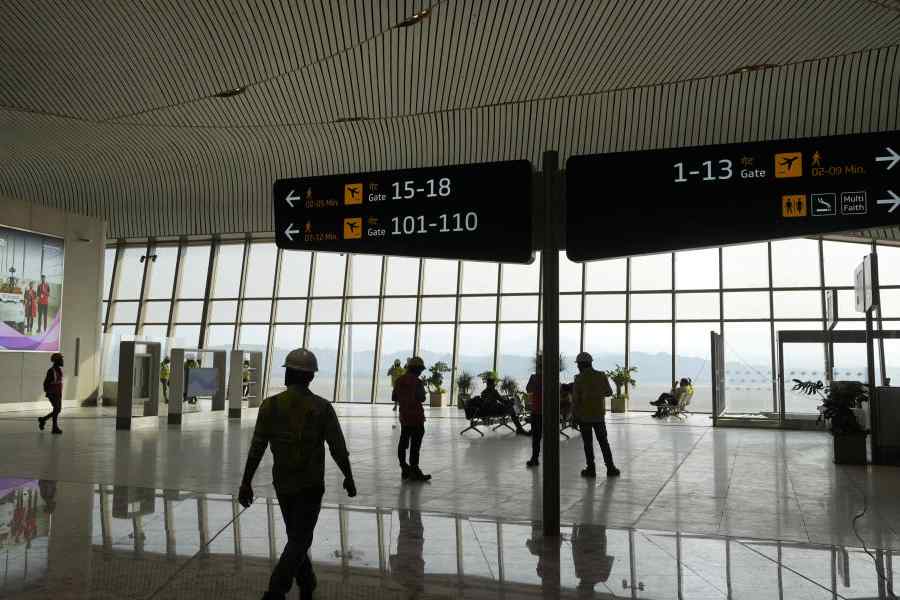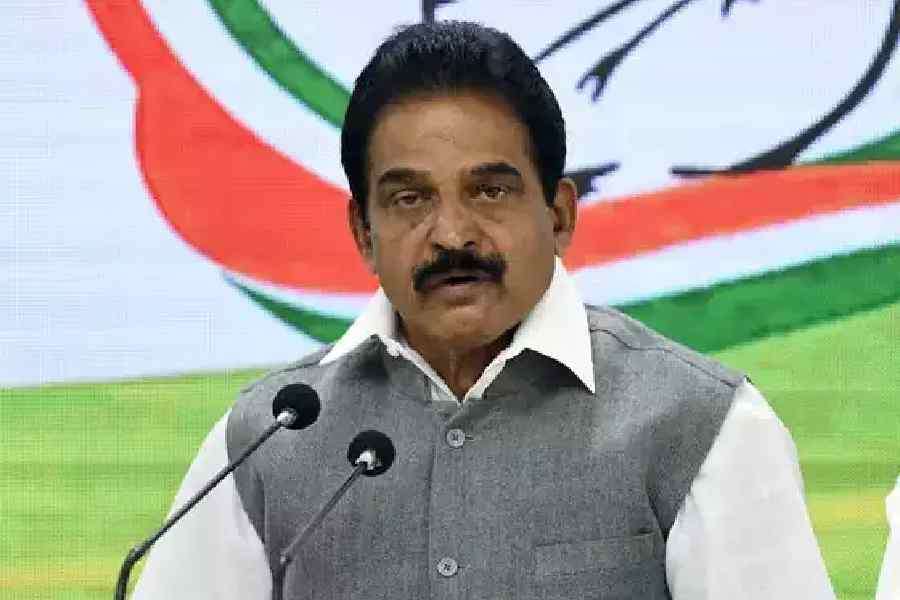 |
| A security guard looks at a car damaged by the tsunami in Kalpakkam. (File picture) |
Kalpakkam, Aug. 16: After the tsunami, a wall to keep the sea out.
Scientists at the nuclear power station here haven’t forgotten that December morning two years ago when huge columns of water rose from the sea and slammed ashore, destroying anything that lay in their path.
At least 39 people — among them employees of the Department of Atomic Energy (DAE) and their families — were swept away by the waves that swamped homes and left deep cracks in many in the township here, about 65 km from Chennai.
The dead included two design engineers. One of them, A. Selvaraj, had been with the department for years.
Today, many children still fear to venture near the sea, and they are not the only ones. Some 5,000 families, mostly of scientists and engineers who work in high-tech facilities like the Indira Gandhi Centre For Atomic Research (IGCAR) and the two units of the Madras Atomic Power Station (MAPS), have one prayer on their lips: please keep the sea out.
For the DAE, it was a prayer difficult to ignore. The department has taken up massive expansion projects in its Kalpakkam complex like the 500-mw Prototype Fast Breeder Reactor (PFBR), and the “HRD stakes” were high. Which meant, its talent pool needed to be reassured and retained.
And so the wall.
The DAE, which has taken up construction of the 3.2-km-long, 300-mm-thick structure, believes the Tsunami Resistant Wall (TRW) will also act as a psychological shield.
Y.C. Manjunatha, director, engineering services group, IGCAR, and additional engineer Sivathanu Pillai said the 5.5-metre-high wall was being “packed with boulders”. The Rs 18-crore project also plans to develop sand dunes on the wall’s seaward side.
Another plan is to strengthen the coastline with mangrove and casuarina plantations. The wall, whose distance from the shore ranges from 50 to 200 metres depending on the coastline’s contour, “is sufficiently anchored by the boulders”, they explained.
Beneath the wall and the stones, “geo-textiles have been used to prevent erosion”, the engineers added.
Manjunatha said the “total structure” has been designed by the Ocean Engineering Centre of the Indian Institute of Technology, Madras. It was then cleared by the Central Water and Power Research Station, Pune. “We want to complete the entire work before the northeast monsoon sets in by mid-October,” the engineers said.
The size of each boulder placed all along the wall has been “carefully designed” so that they can dissipate the amount of energy carried by tidal waves, Manjunatha said.
Before the tsunami, an ordinary stone wall doubled as a compound wall for the township, but much of it was washed away.
As the “tallest wave” during the tsunami here was 4 metres high, this wall has a 1.5-metre buffer, Manjunatha said. “It is a morale boosting wall for the scientific community, their families and others who work at Kalpakkam.”
The DAE, however, has no plans to extend the wall to near the MAPS reactors or the new PFBR project site, close to which two other 500-mw fast breeder reactors are planned.
“All the nuclear power plants are already at a higher level, designed intrinsically to meet the safety norms of such plants coming up in coastal areas, based on the cyclonic surge data for a 1,000-year cycle period. Hence, there is no need to extend the wall to their site,” IGCAR director Baldev Raj said.
In the case of the upcoming PFBR, the director said the foundation level has already been raised. Its “finished floor level” is 9.5 metres above the sea level at Kalpakkam, which gives it more than ample margin of protection from such killer waves, he added.











